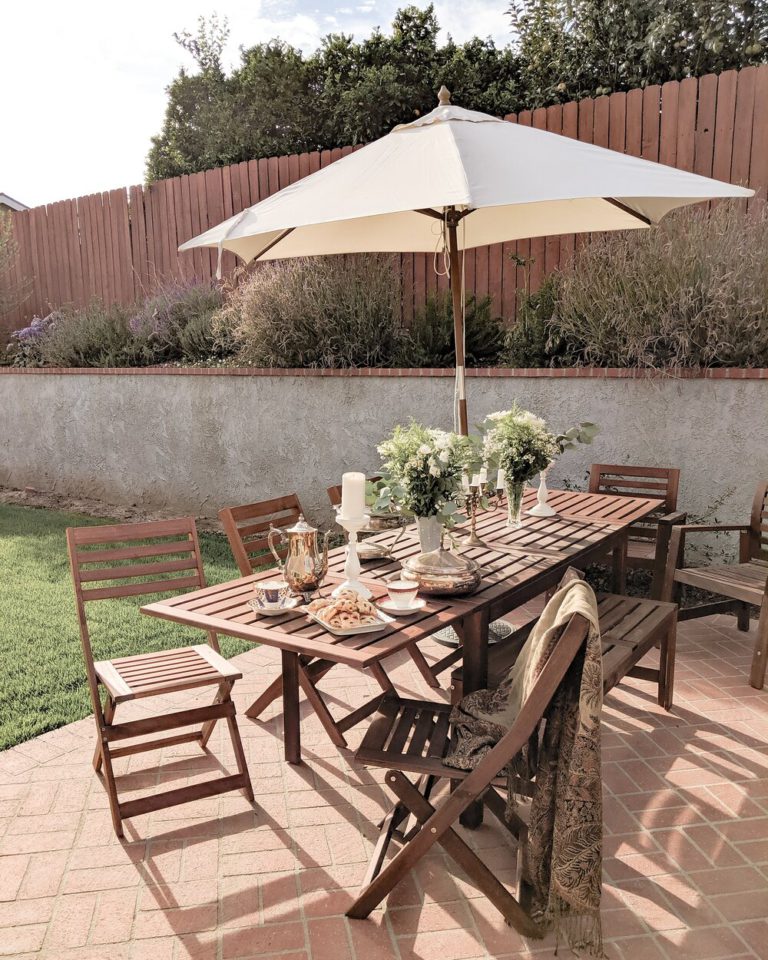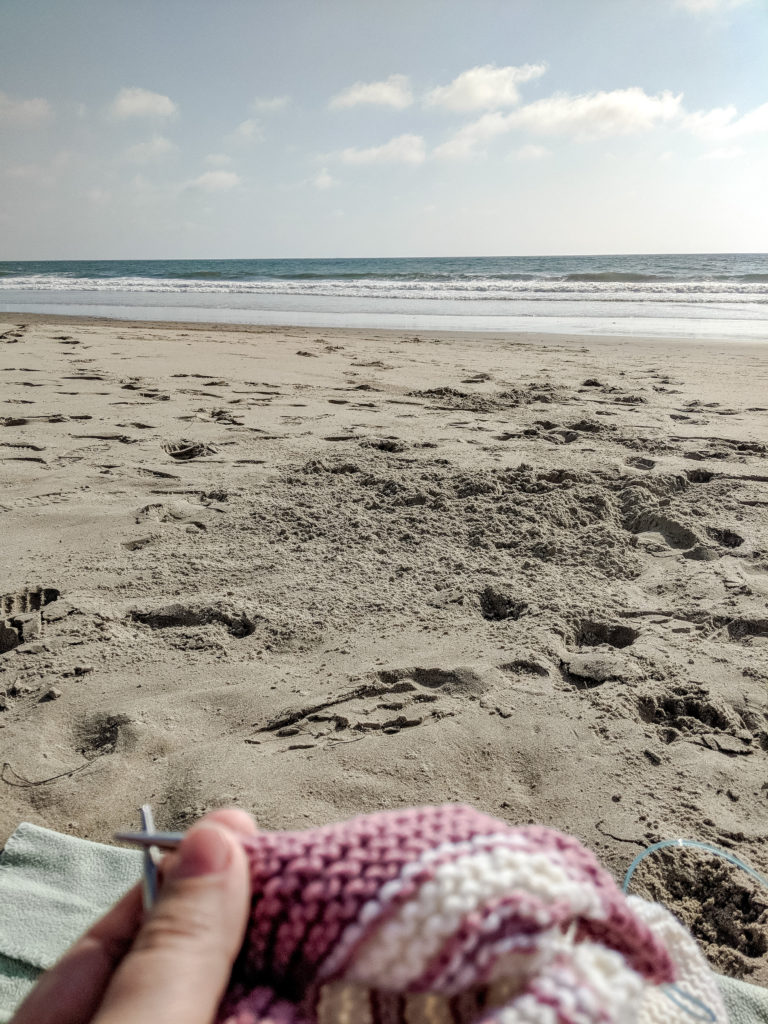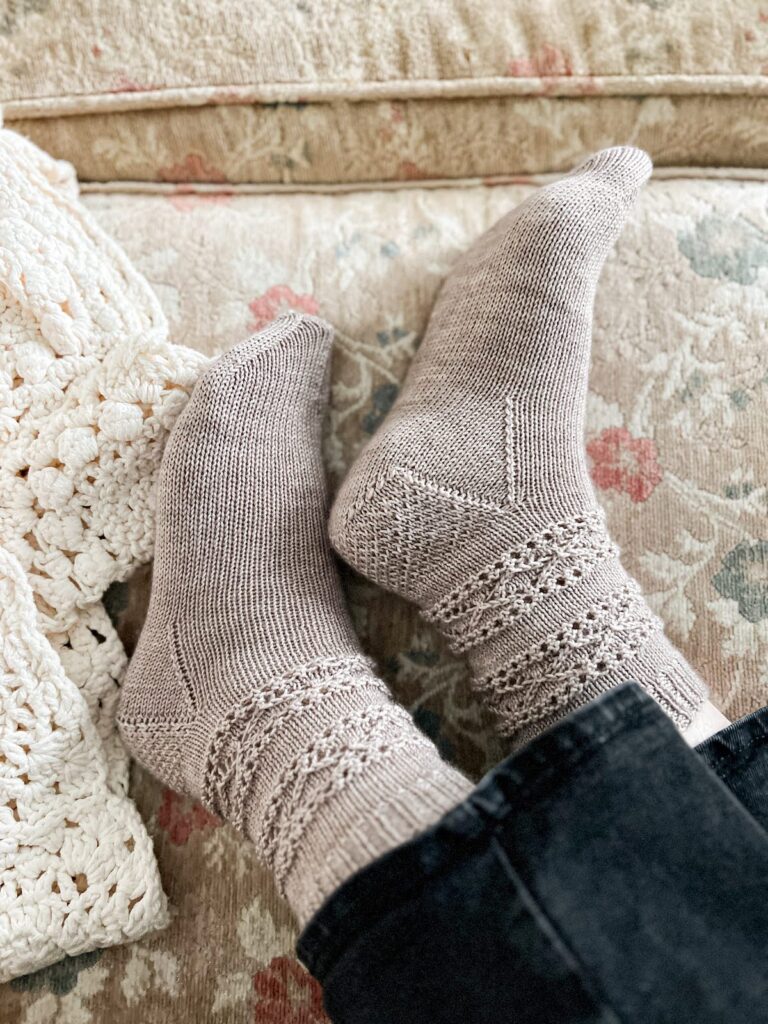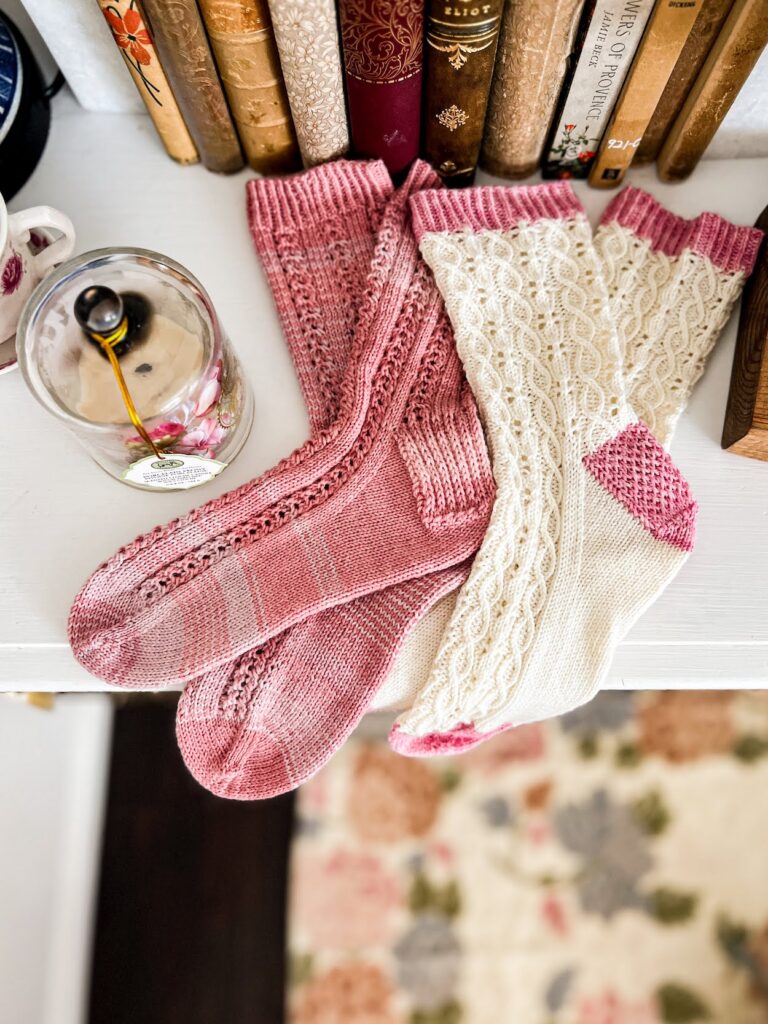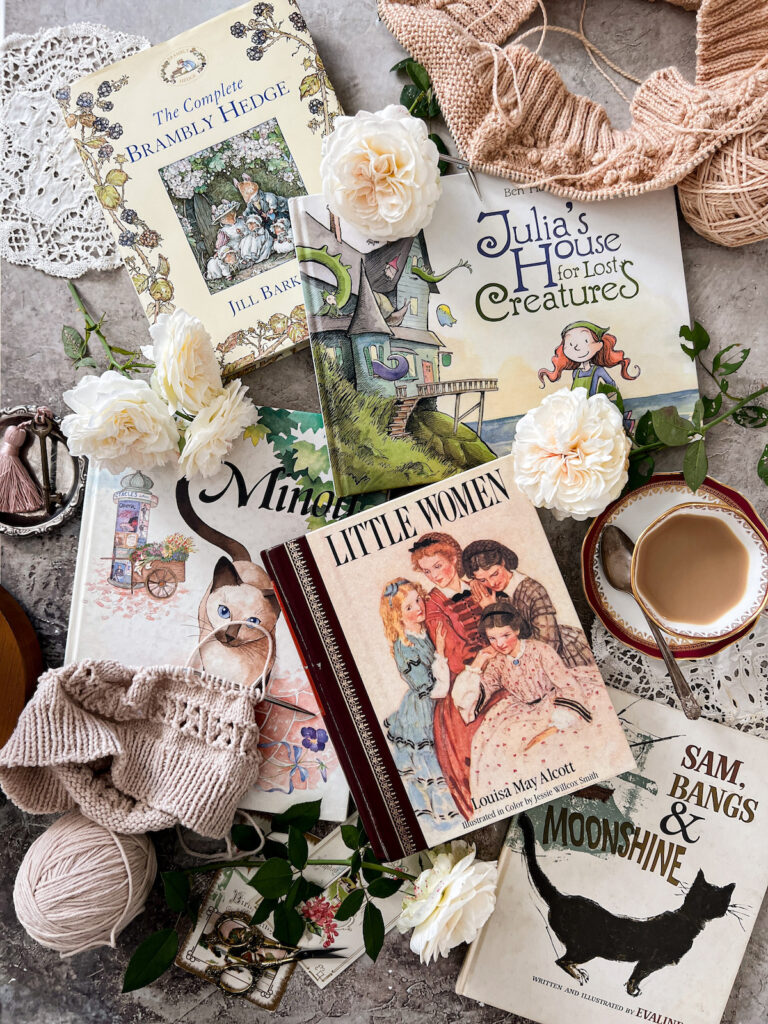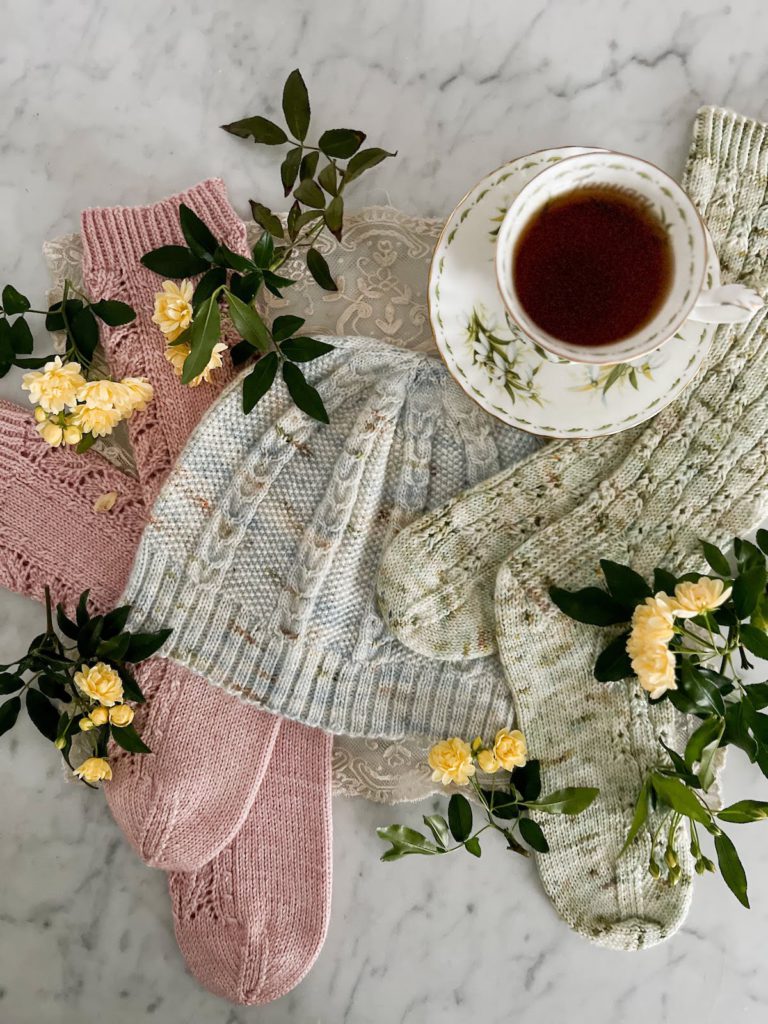Welcome to the next installment in a new semi-regular feature here on the blog: interviews with fellow makers! I’m having such fun sitting down with fellow makers to see how their past experiences and current passions show up in their work as dyers, designers, weavers, spinners, crocheters, and more.
This month’s featured maker is Sharon Miller of Flora Adora Fibers. Sharon is a natural dyer who works with a wide range of yarn bases. You can find her on her website and on Instagram.

1. What first drew you to fiber arts?
I’ve been involved in some sort of fiber arts most of my life-sewing, embroidery, knitting, quilting, spinning. Growing up, sewing my own clothes was a way to save money while being stylish, as well as having clothes that fit. I’m fairly tall, so I could lengthen sleeves and pants as needed; there wasn’t as much variety in sizing as there is now.
2. What is the most important lesson you’ve learned from fiber arts?
The fiber arts are great for learning a new skill on your own and indulging in something that fulfills a need to make. There’re so many resources available that make it easy to dip your toes into so many things-knitting, spinning, etc.
3. How do you hope your work will affect others?
My hope is they come to realize naturally dyed yarns are a viable alternative to those synthetically dyed. They’re colorfast and produce a wide range of colors. Fibers were exclusively dyed with natural dyes until the mid 1800’s as that was all that was available. Yes, there are some chemicals involved-but those I use are food grade. Natural dyes are renewable, often come from commonly available sources-like goldenrod from my backyard- and used dyes and water are composted or added back to my garden or property.
Another goal is to introduce customers to fiber types that are a bit outside the usual, something other than superwash Merino. Right now, I offer BFL (Bluefaced Leicester) DK; Peaceful Worsted, which is a Rambouillet-Mohair blend, and several “farm yarns” and am working on getting more custom spun yarns.
4. When do you feel most inspired to work?
Sometimes, inspiration doesn’t really play a part in things-if I’m getting ready for a show, I just have to get things done. But other times, ideas seem to pop into my head, or I think maybe, next time I’ll try this rather than that. Ideas usually come to me when working in the garden, going for walks or driving for my job. Then I’ll have a burst of experimentation, trying a new technique, or a new plant, and just having fun.
5. How do you cultivate creativity in your daily life?
I don’t think I really cultivate creativity deliberately, and maybe I should. It often gets relegated to spare time in the evenings, or weekends.

6. Where do you like to do your work? Why do you like that spot?
Don’t ask me why but I almost always work at my dining room table, whether I’m knitting, on the computer, putting tags on yarn skeins, etc. I think because there’s plenty of room to spread out with good lighting. And also the desk in “my room” is always a complete mess.
7. Who has helped you become a better fiber artist? How have they helped you?
There are 2 groups that have helped me. The first are the instructors for several natural dyeing classes I’ve taken. They really opened my eyes to new techniques and expanding color ranges in ways I wouldn’t have learned on my own. And the second are my customers. There’s been 2 recent occurrences where customers have reported their yarn keeps bleeding color with washing, or color rubs off on their hands while knitting. Even though it’s embarrassing, and humbling to find out my yarns have problems, it makes me investigate the problems further and look for a cause, such as not washing the yarn well enough before dyeing. So, in the end, I’m a better dyer. Customers are also great for coming up with beautiful color combinations I never would have considered.
8. I loved your point about how customers help you troubleshoot and make new color combinations. I’ve also had some really neat, clever suggestions from people who’ve used my patterns and then given me ideas for new designs based on modifications they made. What do you think it is about their perspective that helps them see things we can’t see in our own work?
One possibility is they’re not encumbered by what we perceive as limitations or difficulties, so they push us to try something new or different, or even address a problem we’ve been trying to ignore (and hoped no one else noticed)
9. Why did you decide to build a business in fiber arts?
My job as a home health physical therapist had me traveling some days 2 hours 1 way to get to a patient, and with all the driving, my evenings were spent finishing paperwork. The job just burned me out. So, I was looking for a way to supplement my income and cut back my work hours, as well as having a small business to stay busy once I retired. I literally made a list of things I enjoy-knitting, the outdoors, gardening, etc. and came up with natural dyeing as a good fit.

10. I also started my fiber arts business after burning out pretty badly in a previous career, and I’ve met several others who’ve done the same. What do you think it is about the fiber world that draws so many people looking for something different?
I think so many of us enjoy and take comfort from some sort of fiber hobby, it’s natural to be drawn to making it a business. Myself, I felt I had a fair amount of experience with sewing, knitting, gardening and quilting and that it would be easy to turn that into a business. People would just snap up my naturally dyed yarn! In reality, it’s been a lot more complicated that I ever imagined but I have not regretted taking the plunge. I also suspect the fiber world seems less threatening to women than other businesses, since it tends to be primarily other women and a “hobby” industry.
11. How do your previous experiences show up in your work?
I’m used to working long hours, trying to plan ahead, driving quite a bit, being active, paying attention to body mechanics with lifting. So these all show up with natural dyeing: lifting heavy dye pots, driving to fiber shows in other states, being on my feet, organizing for shows, etc.
12. Your yarns are dyed entirely with natural dyes. What drew you to natural dyeing in particular?
I love being outdoors, gardening, and learning about native plants. Its totally amazing by how many botanicals can be used for natural dyeing. There are some incredibly complicated dyeing protocols our ancestors used to produce color, including a good black.
13. What do you find most challenging and most rewarding about working with natural dyes?
The challenge can be getting the same colors more than once! I have a sweater that’s a gorgeous deep red-orange and I’m still trying to duplicate that color again; I haven’t really come close yet but I keep trying. The rewards include following in the footsteps of natural dyers from hundreds, even thousands of years ago, while combining new and old techniques. It’s also exciting to know I can literally step out my backdoor to find plants and other materials to dye with.

14. You offer a wide range of yarn bases in your shop. What is your favorite yarn base you’ve ever worked with? Why do you love it?
My favorite is Meadow Rustic Sport, a rustic single ply sport weight yarn from Canada. The base is slightly heathered, which results in really rich colors. Meadow is easy to work with, and flexible-I’ve used it in patterns calling for fingering, sport and dk with excellent results. It blooms and blocks superbly and is a very forgiving and versatile yarn, to my mind.
15. I love how you describe Meadow Rustic Sport as a forgiving yarn! What are some of the characteristics of a yarn that make it more forgiving than others?
This particular yarn is a single ply but quite strong. I’ve used it as a fingering weight, and also for patterns calling for DK. It stays flexible at smaller gauges but blooms and fills in the gaps at larger gauges. I didn’t do a great job keeping my colorwork loose on a recent sweater, so the yoke was all puckery. But blocking took care of that. And the heathery, rustic texture is great at hiding mistakes!
—
Many thanks again to Sharon for joining me in conversation this month! In case you missed last month’s installment with Rox of Eat.Wander.Crochet, be sure to check it out.
If there’s a maker you’d like to see interviewed (or you’d like to be involved yourself!), please drop me a comment below or send an email. I’d love to have as many people involved in this project as possible.
Let’s stay connected!
Join my newsletter for 30% off all new releases, regular updates with helpful tips and tricks, first crack at registration for upcoming workshops, exclusive discounts, and more.
Join the A Bee In The Bonnet Facebook Group to participate in knitalongs and other fun community events
Come hang out with me on the A Bee In The Bonnet TikTok
Follow along on the A Bee In The Bonnet Instagram
Get inspired via the A Bee In The Bonnet Pinterest

